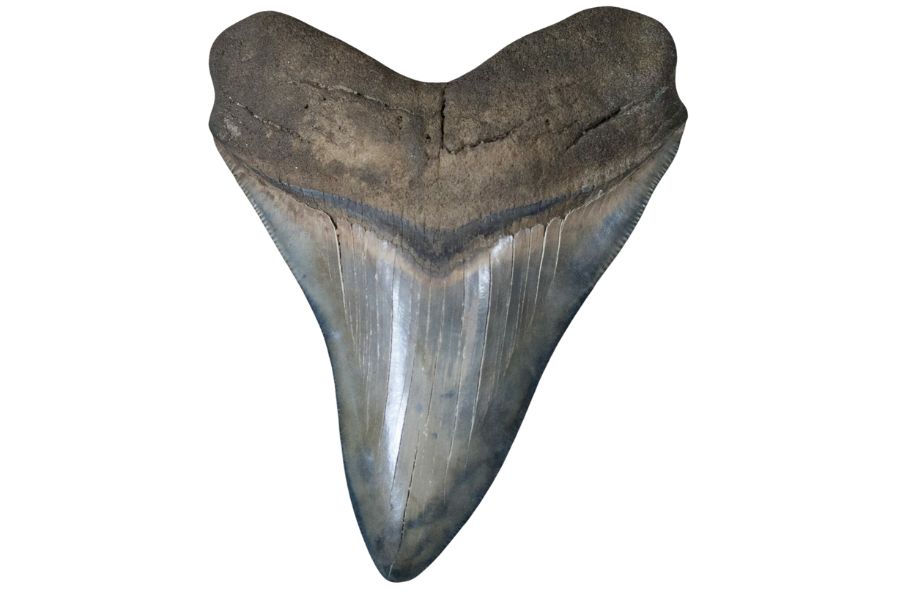To find megalodon teeth, you need to know the right places and have a bit of guidance. This hunt can be challenging, but we’re here to help you out. We’ve been to some of the best spots in the state, and we’re eager to share our knowledge.
Places like Westmoreland State Park, Chesapeake Bay, and Shark Tooth Island are fantastic for this kind of exploration. In these areas, the chances of finding megalodon teeth increase significantly.
But knowing how to search is just as important. We’ll give you tips on where to look, how to spot these fossils, and the best ways to search.
What Are Virginia Megalodon Teeth Anyway?
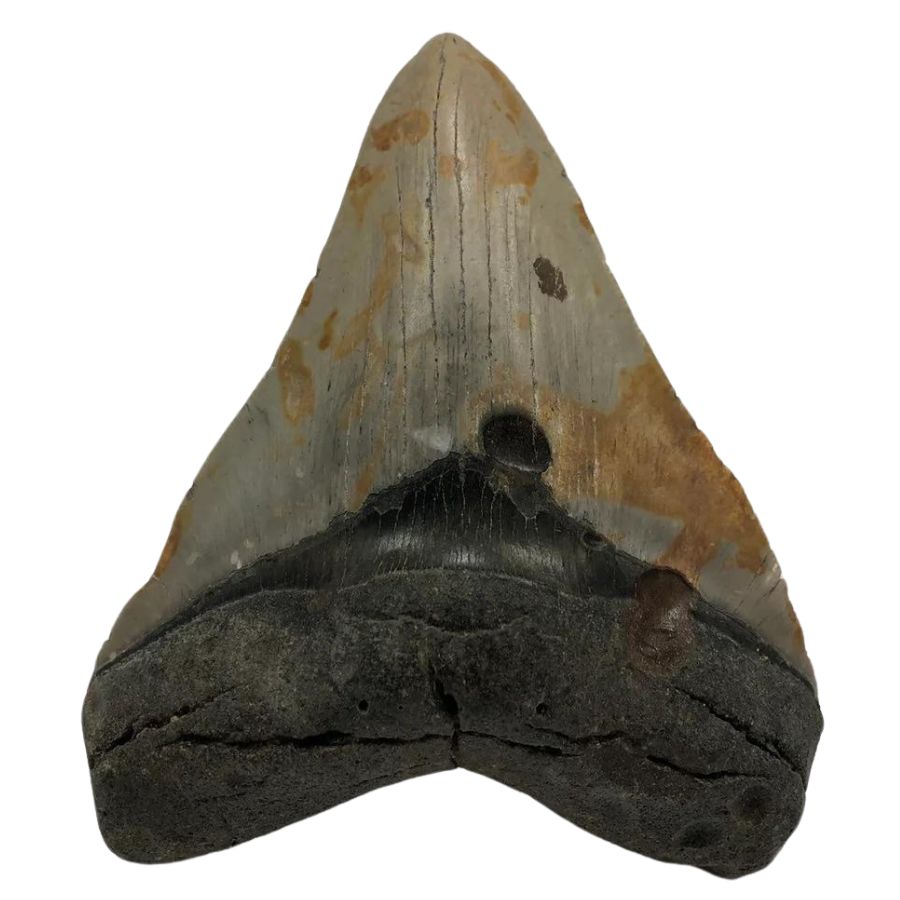
Megalodon teeth are fascinating fossils from a huge prehistoric shark. Identifying megalodon teeth is exciting because of their size and shape. They’re much larger than modern shark teeth and have a distinctive triangular form with a serrated edge.
These fossils are typically found in places that were once underwater. Think of riverbeds, coastal areas, and under the sea. In these locations, layers of sediment have preserved the teeth over millions of years.
Erosion often brings these teeth to the surface, where we can find them. It’s common to discover megalodon teeth on beaches, in cliffside deposits, or even dredged up from the ocean floor.
The value of megalodon teeth can vary a lot. Factors like size, condition, and color affect the price of megalodon teeth. Smaller, more worn teeth might be more affordable, while larger, well-preserved ones can be quite valuable.
The Types Of Megalodon Teeth Found In Virginia
Megalodon teeth come in different types based on where they sat in the shark’s mouth. Just like us, these giant sharks had teeth for different jobs, such as front teeth for grabbing and back teeth for crushing.
- Anterior
- Lateral
- Posterior
For those eager to learn more and find fossils in Virginia, check out our fossil guide. It’s packed with tips, locations, and insights about the state’s rich geological past.
- The deep experience and understanding of our team about the area
- Recommendations from local groups and clubs
- How easy it is to get the a particular location
- Safety and potential hazards when collecting
- Weighing private and public locations
- The ability for both experienced and novice geode enthusiasts to find great samples
With these factors in mind we’ve been able to put together a fantastic list that just about anyone can use!
It’s really easy to pass up on great finds without a little guidance. A lot of you are making some mistakes with what you’re throwing away.
If you want REAL results finding incredible rocks and minerals you need one of these 👇👇👇
Finding the coolest rocks in isn’t luck, it's knowing what to look for. Thousands of your fellow rock hunters are already carrying Rock Chasing field guides. Maybe it's time you joined the community.
Lightweight, mud-proof, and packed with clear photos, it’s become the go-to tool for anyone interested discovering what’s hidden under our red dirt and what they've already found.
Join them, and make your next rockhounding trip actually pay off.
What makes it different:
- 📍 Find and identify 140 incredible crystals, rocks, gemstones, minerals, and geodes across the USA
- 🚙 Field-tested across America's rivers, ranchlands, mountains, and roadcuts
- 📘 Heavy duty laminated pages resist dust, sweat, and water
- 🧠 Zero fluff — just clear visuals and straight-to-the-point info
- ⭐ Rated 4.8★ by real collectors who actually use it in the field
The Best Places To Find Megalodon Teeth in Virginia
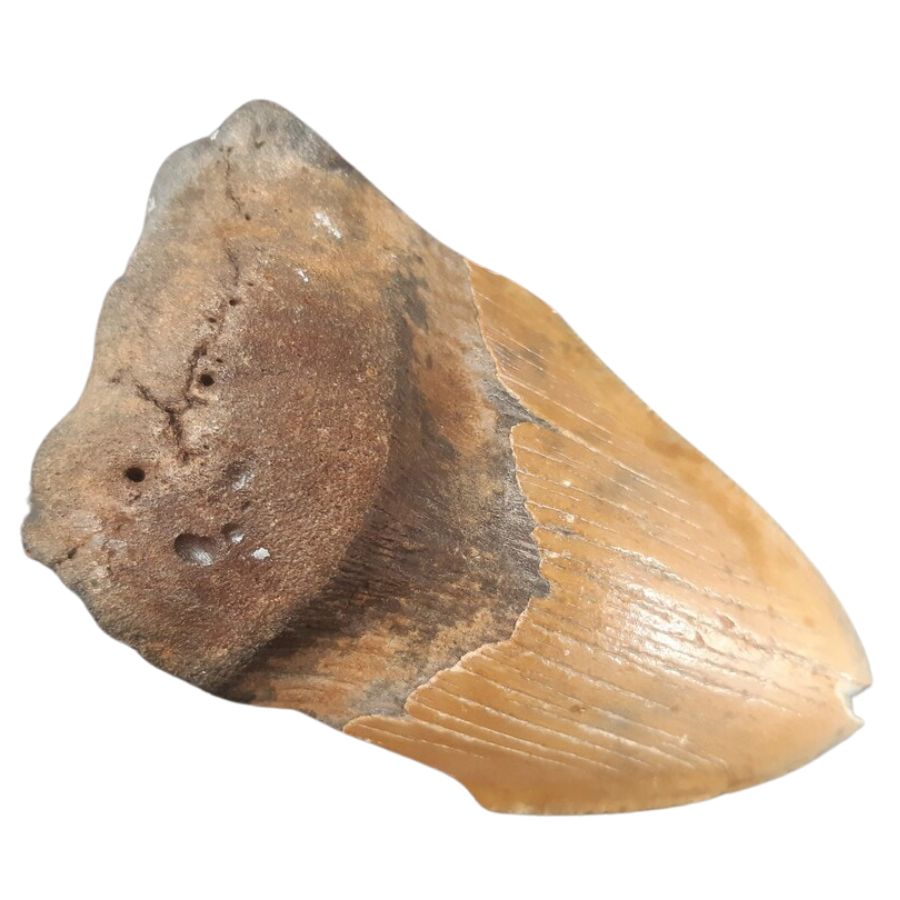
Without the right guidance, it can be tough to find these hidden fossils. That’s why we’re here to share our experiences and tips on finding these incredible pieces of history.
Always Confirm Access and Collection Rules!
Before heading out to any of the locations on our list you need to confirm access requirements and collection rules for both public and private locations directly with the location. We haven’t personally verified every location and the access requirements and collection rules often change without notice.
Many of the locations we mention will not allow collecting but are still great places for those who love to find beautiful rocks and minerals in the wild without keeping them. We also can’t guarantee you will find anything in these locations since they are constantly changing.
Always get updated information directly from the source ahead of time to ensure responsible rockhounding. If you want even more current options it’s always a good idea to contact local rock and mineral clubs and groups
Westmoreland State Park
Westmoreland State Park is a remarkable place with a rich geological background. Nestled along a scenic river, it offers a unique landscape of cliffs, beaches, and forested areas.
The park’s cliffs, made of soft sedimentary rock, are constantly eroded by the river, revealing a wealth of fossils. You can often find shark teeth and other marine fossils here, a testament to the area’s underwater past.
The terrain in the park is diverse, ranging from sandy beaches to rugged cliffs. These cliffs are especially interesting to us geologists because they expose layers of earth that are millions of years old.
Geologically, the park is part of a larger basin known for its fossil deposits. The sediments here date back to the Miocene epoch, making it a fantastic spot for studying past marine life.
Remember, if you’re planning to collect rocks or fossils in the park, you’ll need to check with the Virginia Department of Conservation and Recreation (DCR).
They have specific guidelines and rules for rock collecting. Being aware of and following these rules is crucial for anyone interested in exploring the park’s geological treasures.
Where we found megalodon teeth in Westmoreland State Park
In Westmoreland State Park, you can find megalodon teeth along the river’s beaches where erosion exposes new layers of sediment. These teeth are usually buried in the cliffside sediments, slowly uncovered by the natural forces of water and wind.
Carefully search the base of the cliffs and the nearby beach areas, where these fossils are most likely to be found. The best times to look for these teeth are after storms or high tides, which can reveal new fossils that were previously hidden.
If you want REAL results finding incredible rocks and minerals you need one of these 👇👇👇
Finding the coolest rocks in isn’t luck, it's knowing what to look for. Thousands of your fellow rock hunters are already carrying Rock Chasing field guides. Maybe it's time you joined the community.
Lightweight, mud-proof, and packed with clear photos, it’s become the go-to tool for anyone interested discovering what’s hidden under our red dirt and what they've already found.
Join them, and make your next rockhounding trip actually pay off.
What makes it different:
- 📍 Find and identify 140 incredible crystals, rocks, gemstones, minerals, and geodes across the USA
- 🚙 Field-tested across America's rivers, ranchlands, mountains, and roadcuts
- 📘 Heavy duty laminated pages resist dust, sweat, and water
- 🧠 Zero fluff — just clear visuals and straight-to-the-point info
- ⭐ Rated 4.8★ by real collectors who actually use it in the field
York River State Park
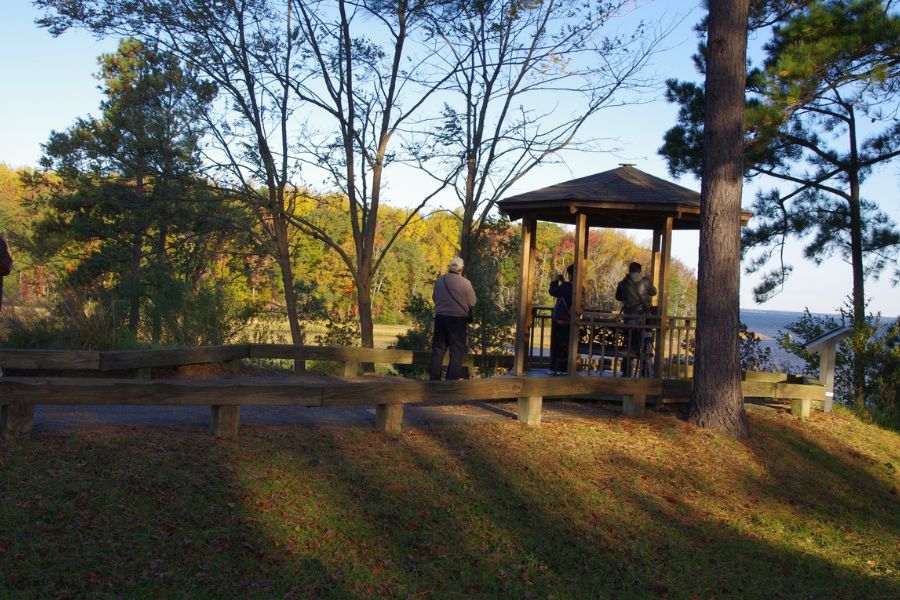
York River State Park is a fascinating area, rich in diverse landscapes and geological features. The park encompasses a wide range of terrains, from dense forests to marshy wetlands.
There’s also a network of trails that lead through varied ecosystems, allowing us to witness the area’s geological diversity firsthand. The park is bordered by a large river, which has played a significant role in shaping the landscape over time.
Geologically, the park is known for its fossil-rich areas, especially along the riverbanks where erosion constantly uncovers new layers that reveal a mix of fossils and other geological treasures.
It also features cliffs that provide a cross-section view of the geologic strata.
Where we found megalodon teeth in York River State Park
Explore along the riverbanks where erosion uncovers various fossils, including megalodon teeth. These teeth are usually found in the sediment layers that have been washed up or exposed by the river’s flow.
Focus your search near the water’s edge, particularly after heavy rains or storms.
Chesapeake Bay
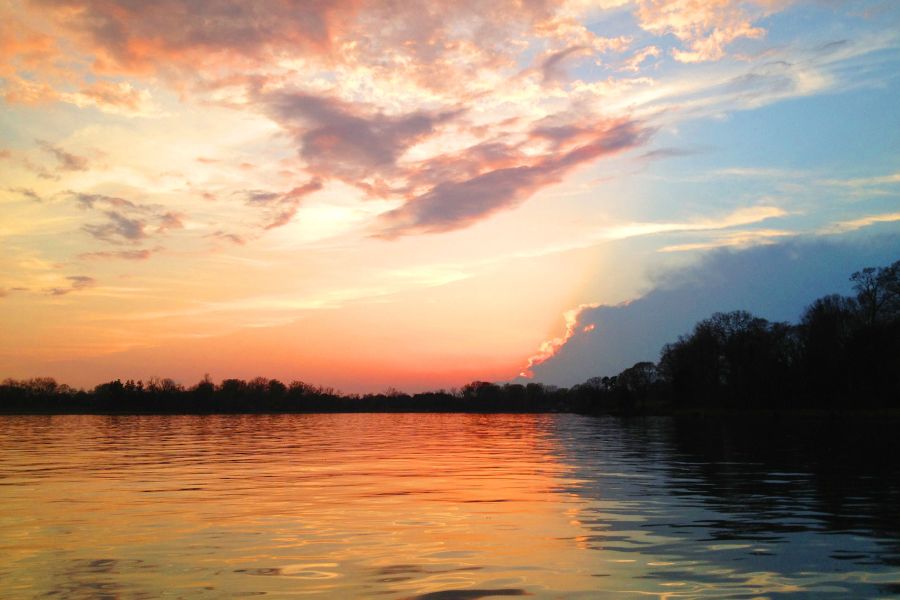
Chesapeake Bay is a massive and dynamic estuary, where fresh water from rivers mixes with the ocean’s salt water. Its geography includes a mix of sandy beaches, lush wetlands, and dense forests, creating a diverse landscape.
The bay also has underwater grass beds and oyster reefs, which are vital for the ecosystem. The bay’s shores are constantly changing due to erosion and sediment deposit, making it a fascinating area for geological study.
The geology of Chesapeake Bay reveals a history of rising and falling sea levels, which have shaped its current form. There are layers of sediment along the bay that tell stories of past climates and ecosystems.
The bay’s waters have also carved out deep channels and created a variety of habitats, each with its unique geological characteristics.
Where we found megalodon teeth in Chesapeake Bay
You can find Virginia megalodon teeth along the sandy shores and in the shallow waters near the coast. Concentrate your search in areas where the water has recently shifted sands, as this often brings new finds to the surface.
James River
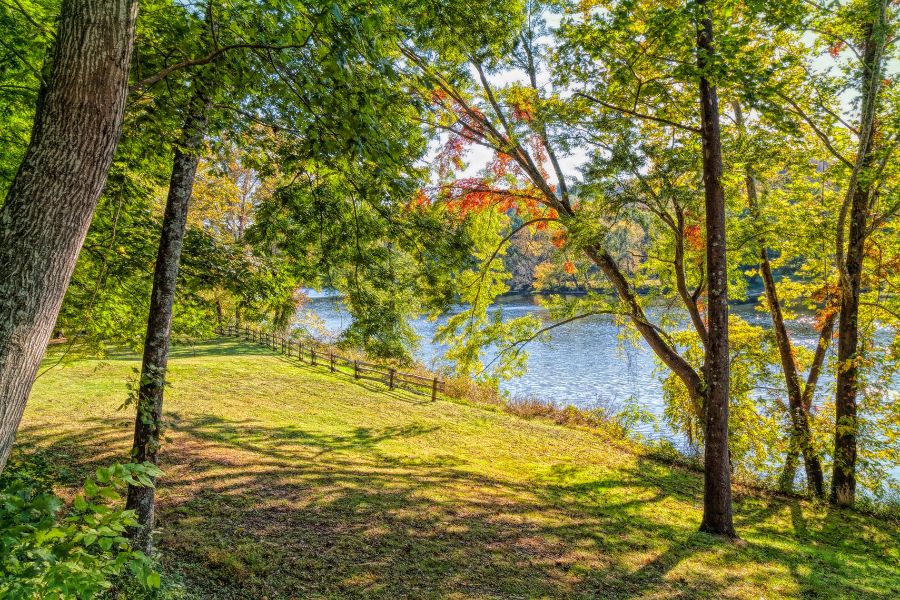
The James River winds through different landscapes, from rolling hills to flat plains, offering a variety of terrains to study. There are sedimentary rocks and occasionally fossils along its banks, evidence of the river’s long history.
In addition, the areas around the river also provide unique habitats for plants and animals, influenced by its varied terrain and the minerals found in its waters.
The geology along the James River includes layers of shale, sandstone, and limestone. These rock formations tell us about the environments that existed here millions of years ago.
Where we found megalodon teeth in the James River
Search for megalodon teeth along the riverbanks, where the flowing water uncovers new layers of sediment. These teeth can be found in areas where erosion has exposed older geological layers, often after heavy rains or flooding.
Focus your searches near bends in the river and at the base of cliffs, where sediments accumulate.
Shark Tooth Island
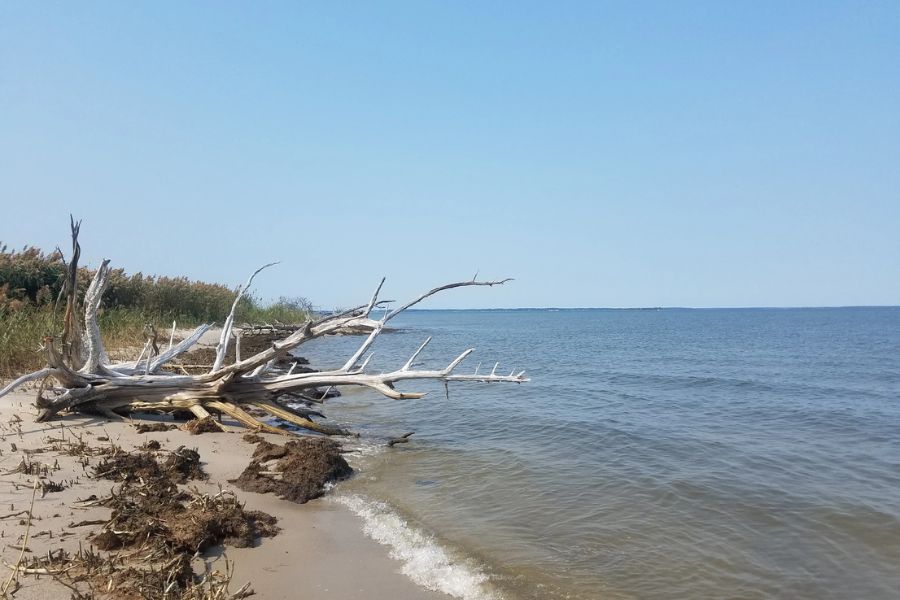
The geography of Shark Tooth Island includes sandy shores, small cliffs, and a mix of vegetation that makes exploring here a real adventure.
We find the island’s terrain varied, with areas of soft sand and harder rock formations. This variety in the landscape is a result of different geological processes over time.
The geology of Shark Tooth Island is fascinating, with sedimentary layers that are perfect for fossil hunting. These layers often contain marine fossils, including shark teeth, telling stories of the island’s past under the sea.
Where we found megalodon teeth on Shark Tooth Island
Search along the shoreline, where waves and tides wash up megalodon teeth among the pebbles and sand. These teeth are typically found embedded in the sediment, especially after storms that stir up the seabed.
Make sure to explore the areas near the small cliffs as well, where natural erosion can reveal hidden fossils.
Other Great Places To Find Virginia Megalodon Teeth
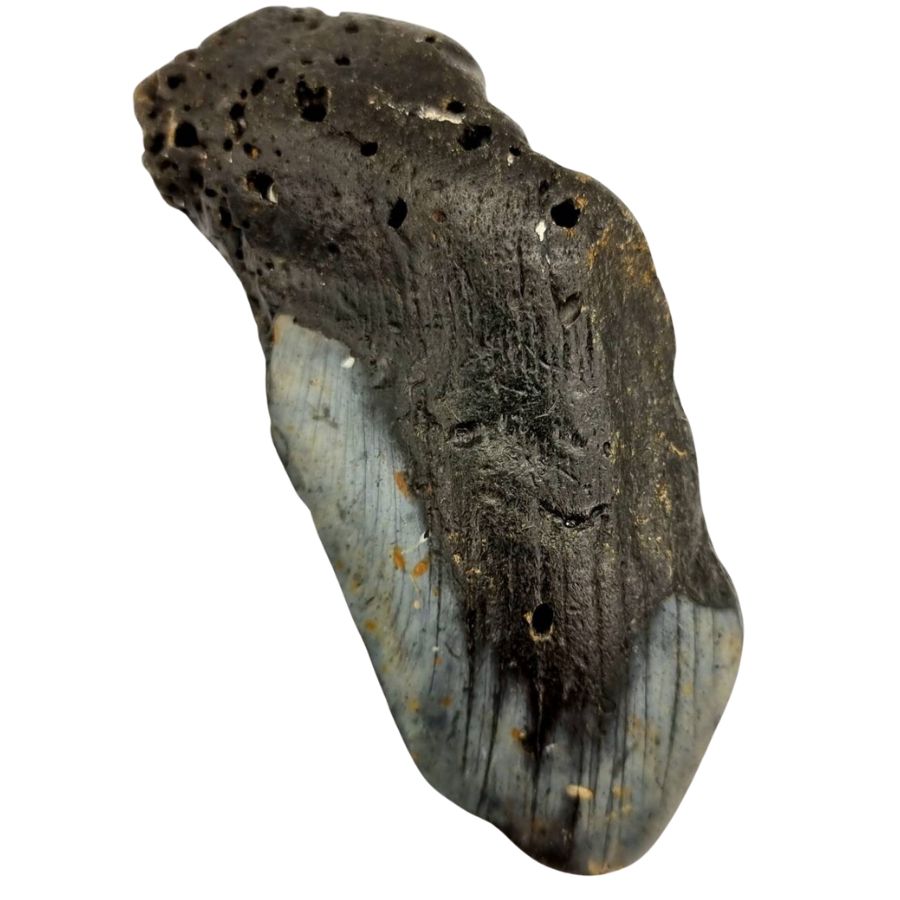
There are other prime spots where these fossils are more common. We’ve explored various locations, each with its own unique landscape and potential for discoveries. Here are our honorable mentions:
Our recommendations by county
| County | Location |
| Surry County | Chippokes State Park |
Common Megalodon Teeth-Hunting Questions
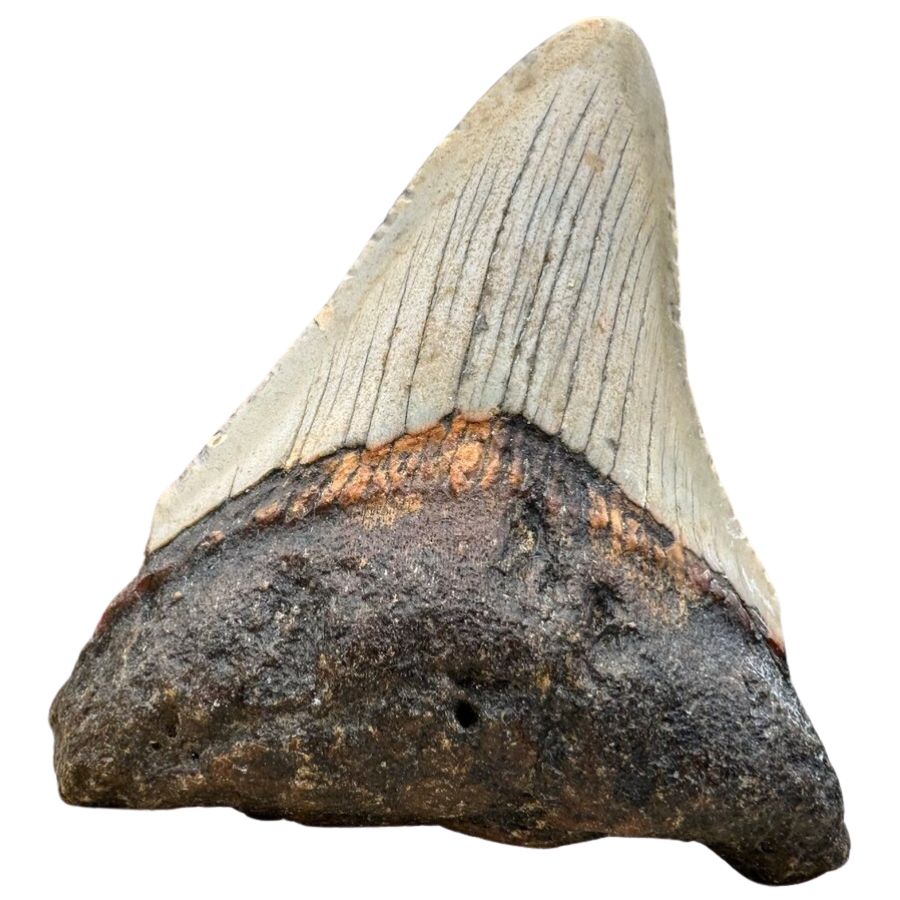
We’ll answer some of the questions that people typically have about searching for megalodon teeth in the state:
Is it illegal to collect megalodon teeth in Virginia?
It’s generally legal to collect megalodon teeth and other fossils in Virginia, but it’s important to always make sure to check the local regulations first. This includes understanding how to find megalodon teeth in Virginia while respecting the law.
On private land, you need the landowner’s permission to collect any fossils, including megalodon teeth. On public lands, such as state parks or national forests, the rules can be different.
In state parks, collecting fossils, including megalodon teeth, is usually not allowed without a permit. These rules are in place to protect the natural and historical resources of the area.
However, there are some beaches and riversides in Virginia where fossil collecting is permitted. These areas are usually on public lands, but not always in state or national parks.
Often, a good approach is to join a fossil hunting group or tour, where the leaders are knowledgeable about the legalities and best practices.
The Best Places To Buy Megalodon Teeth In Virginia
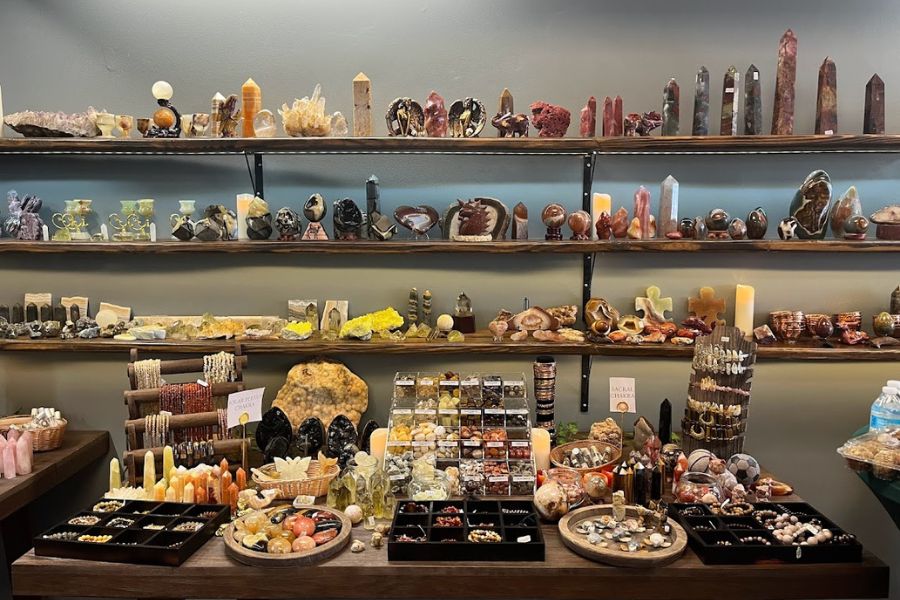
In our adventures across Virginia, we’ve come across some great shops that sell megalodon teeth. These are our top picks:
- Packard’s Stamp and Rock Shop – 13131 Midlothian Tpke, Midlothian, VA 23113
- Stone Goddess Rock Shop – 206 Chesterfield Ave, Colonial Heights, VA 23834
- U Rock Art – 70 Coliseum Xing, Hampton, VA 23666
- Stones N’Bones – 18013 Forest Rd # C02, Forest, VA 24551
- Excalibur Mineral Corporation – 1885 Seminole Trail #202, Charlottesville, VA 22901

